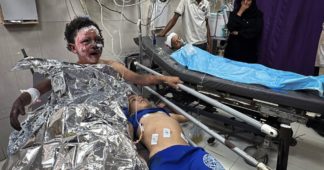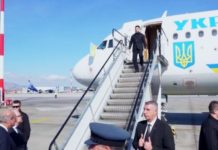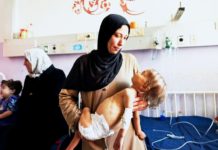Israeli Forces Kill 74 Palestinians in Gaza Over 24 Hours
At least 14 Palestinians were killed while seeking aid on Wednesday
Gaza’s Health Ministry said on Wednesday that Israeli attacks killed at least 74 Palestinians and wounded 391 over the previous 24-hour period as the daily US-backed slaughter continues.
The Health Ministry said another five bodies of Palestinians killed in previous attacks were recovered. “There are still a number of victims under the rubble and on the streets, and ambulance and civil defense crews cannot reach them,” the ministry wrote on Telegram.
Medical sources told Al Jazeera that at least 14 Palestinians were killed by Israeli fire while waiting near aid distribution sites run by the US and Israeli-backed Gaza Humanitarian Foundation. According to the Health Ministry, at least 549 Palestinians have been massacred while seeking aid since the GHF began operating at the end of May.
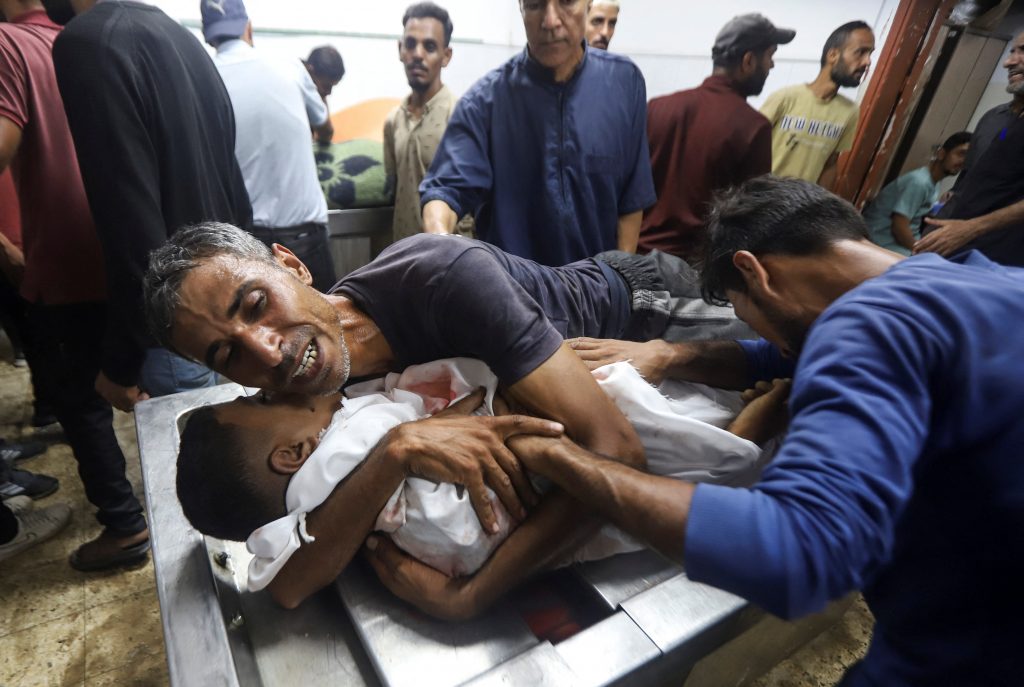
Heavy Israeli airstrikes and shelling also pounded targets across the Strip. According to the Palestinian news agency WAFA, at least 15 people were killed by Israeli shelling in the southern cities of Rafah and Khan Younis. In Gaza City in the north, WAFA reported that at least eight people were killed by Israeli bombings of residential areas.
Al Jazeera reported that five people were killed in an Israeli strike on a home in Deir el-Balah, central Gaza, and another three Palestinians were killed by an Israeli attack in the nearby Nuseirat refugee camp.
On Tuesday, seven Israeli soldiers were killed in a Hamas ambush in Khan Younis. According to Israeli media, the troops were killed when an explosive was detonated and set an armored personnel carrier on fire. Hamas’s military wing, the al-Qassam Brigades, took credit for destroying a “Zionist personnel carrier.”
The Health Ministry said the latest violence has brought the death toll since October 7, 2023, to 56,156 and the number of wounded to 132,239. Studies have shown that the Health Ministry’s numbers are a significant undercount, and estimates that factor in indirect deaths caused by the Israeli siege and destruction of all of Gaza’s civilian infrastructure bring the death toll into the hundreds of thousands.
Keep reading at news.antiwar.com
I survived a massacre at a school in Gaza. My students did not.
.
In late May, in the al-Jerjawi school massacre, the Zionist occupation bombed the shelter rows and tents in the school courtyards. People were burned alive, broadcast for the world to see. The five-year-old girl, Ward Sheikh Khalil, ran among the burning corpses of her family and emerged from the flames.
What did this child do to be left running on an empty stomach? During nights of famine, surrounded by corpses and the stench of blood, how will she recount the greatest catastrophe of her life? How can you tell the world that the occupation not only deprived me of my family but burned them alive—hungry and innocent—for no reason at all? Is there a child anywhere in the world who has endured what this little girl has witnessed?
Watching footage from the al-Jerjawi massacre, I was reminded of what I myself had gone through at another school-turned-shelter.
While I was volunteering at al-Nasr School as an English teacher and children’s entertainer, I decided to dedicate one class to psychological relief—an opportunity to simply listen to the students. These children are among the most marginalized in Gaza. No one hears them, nor cares about their dreams or fears. They have grown up finding themselves in degrading shelters, where they queue for food, search for firewood to break and burn, or stand in line just to get water.
I asked each student, “What do you want to be in the future?”
I expected answers like, “I want to be an engineer,” but their responses were heartbreaking, unlike the dreams of children elsewhere in the world.
One five-year-old student, Aya al-Dalu, told me, “When I grow up, I will eat rice with a lot of meat.”
That answer shattered me. It’s not the children’s fault that their greatest hope is simply to live long enough for the famine to end so they can eat meat.
At that time, in August 2024, Gaza’s north was cut off from the south, and there was no meat at all in the north. The Zionist army had issued a message to support the displacement plan: “Whoever wants food—peace be upon him—should go to the south of the valley.” The mothers remained in northern Gaza, while their children spoke of eating meat when they grew up.
My three-year-old nephew, Omar, saw sardines for the first time after a year and a half of war and, pointing to the fish, said, “This is a snake.”
Is there a child in this world who doesn’t recognize fish — or even fruit?
On August 4, 2024, after I finished volunteering, I stepped out of the classroom into the garden of al-Nasr School. I was composing Baligh Hamdi’s melodies in my mind. When I was overwhelmed by language and unable to express what I was feeling, I turned to music to pour out my sorrow. I saw my students playing in the school garden. I called to them, “Come on, students, go to your families. Classes are over.” But they pleaded, “Please, Miss, let us play a little longer together.”
Just five minutes later, I heard the sound of a missile striking the building directly next to the garden. Even now, I can still hear that exact sound in my mind. In that moment, I collapsed to the ground and screamed. I screamed again, clutching my body, feeling my arms and legs in panic, terrified they might be gone.
When the missile hit, the place turned to fog. I couldn’t see anything, not even my students. Some of them, with their small, fragile bodies, were flung into the sky. Others had survived only because they’d left the school moments before the bombing.
The school administration started shouting, “Go outside and see who’s alive and who’s not!” I stood up and ran. My face had gone pale from shock, and I was completely drained and terrified.
My uncle arrived by car to take me to my family. We stopped at the hospital along the way, bringing injured people with us, including the daughters of a nurse who had been at the school. We didn’t tell them their mother was still buried under the rubble.
More than two months after surviving the al-Nasr School massacre, I finally found the courage to return and see the site where I had almost died. I couldn’t believe I had been so close to the building and survived — even the school principal told me, “Nour, how were you only 600 meters from the missile and survived, while students who were farther away died? It’s truly a miracle.”
Now I ask myself — did I survive so I could tell you what happened in those moments?
That day, I saw my student, Nour al-Din Miqdad, who had lost his entire family in the school bombing. He had stepped out to buy something, unaware that when he returned, no one would be left. His family had been eating what would be their final meal. I remember how his mother would come to me and say, “Nour is smart, but he’s stubborn and difficult. His teachers were patient with him. The war has changed him.”
After the bombing, Nour spent weeks embracing the graves of his mother, father, and siblings. What will he do now? How can he bear what the war has done to him? It stole everything, and he is alone now.
Keep reading at mondoweiss.net
‘Like a trap’: NHS surgeon describes death of nephew, 16, at Gaza food point
Mohammad went missing after becoming separated from his uncles. His family later found his body mutilated beyond recognition
Mohammad’s family spent four days searching for him after he became separated from his uncles at a food distribution point in northern Gaza. They clung to the chance that he had been arrested by the Israel Defense Forces, as the boy was not among the corpses recovered after troops opened fire.
But eventually they found his body mutilated beyond recognition, identifiable only by his electrician father’s work shoes. Mohammad was 16, and his family had not seen a bag of flour for more than a month. His uncle Mo, who was born in Jabaliya, northern Gaza, received news of his nephew’s disappearance in the UK, where he has worked as an NHS consultant for the past 20 years.
Speaking to the Guardian, he described the circumstances of his nephew’s “deliberate killing” as “like a trap”.
He added: “People are completely desperate so they do risk their lives to go and get some food for their families, but then they die. He’s only a little story of thousands of other stories of people like that – just extermination.”
As of 17 June, 397 people have been killed and at least 3,031 injured trying to access food supplies, according to the UN Office for the Coordination of Humanitarian Affairs and the Gaza ministry of health.

The total death toll in Gaza has surpassed 56,000 since the war broke out, and humanitarian organisations continue to face major obstacles bringing in aid and assistance, with the collapse of water systems now threatening drought and hunger.
Before a two-month ceasefire was shattered by Israel in March, Mo’s other 16-year-old nephew was killed and earlier this month, his 52-year-old cousin Atif, a father of nine, was killed by a drone as he retrieved water for his family.
Mohammad’s remains were buried by his family in Jabaliya days after recovering his body.
The bombardment continues day and night in Jabaliya, Mo said, and his family is devastated and hungry. Relatives have been killed and wounded by previous Israeli strikes, and with nowhere to go, his mother recently said it would be more merciful if they were killed by a nuclear bomb.
Every morning, Mo, who has not been able to see his mother for 13 years, fears news will come that more of his family have been killed. “We shouldn’t wait until everyone in Gaza is dead. It’s never too late,” he said. “Something must be done. Nothing is going to stop Israel but action.”
“We continue to see people killed at these so-called aid distribution points,” Rohan Talbot, the director for advocacy and campaigns at Medical Aid for Palestinians (MAP), told UK parliamentarians earlier this month.
Talbot and representatives from other humanitarian organisations gave evidence to the foreign affairs committee about Israel’s attacks on Palestinians in the occupied West Bank and Gaza, including mass casualties at food distribution points.
Throughout the conflict, the charity has sent volunteer medic teams into Gaza, who have shared testimony with the Guardian of the deliberate targeting of healthcare workers and infrastructure.
Mo had volunteered for a trip last year which was later cancelled, which he said was a result of the IDF not allowing him to enter Gaza with Palestinian identification.
The British MP Layla Moran said Mo’s story is a heartbreaking reminder of how deeply betrayed many British Palestinians feel by their own government’s inaction.
She said: “The government’s continued failure to act decisively in Gaza has allowed the horror to spiral into something unconscionable. The scale of destruction is unimaginable, and the human cost is something that can never be undone.”
Moran, who is also Palestinian, met Mo after he operated on her last year. She has raised his case in parliament and continues to urge the government to halt all arms sales to Israel, end trade with illegal settlements and recognise the state of Palestine.
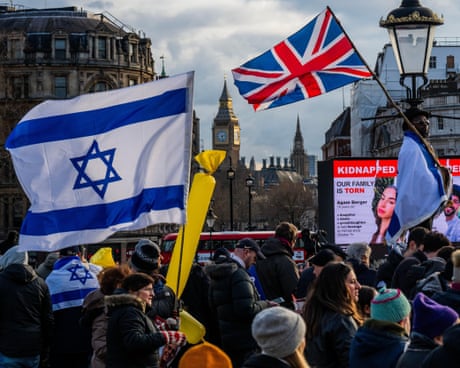
A Foreign Office spokesperson said: “Reports of shootings near aid delivery centres are appalling and highlight the desperate need to get aid into Gaza. Israel must allow partners to operate in line with humanitarian principles and deliver lifesaving aid.”
In May, the UK suspended trade negotiations with Israel, condemning the refusal of aid into the territory and calls by Israeli cabinet ministers to “purify Gaza” as extremist. Although Moran has welcomed the government’s recent shift in tone, words alone, she said, are not enough.
“We cannot allow history to remember us as silent when our voices could have made a difference,” said Moran.
But for Mo, the UK government’s recent shift has come too little, too late.
He said: “I think they should be ashamed that they have not used their leverage on Israel until now. They should be ashamed because they have power to prevent this, not only militarily but also diplomatically.”
The IDF has been approached for comment.
Keep reading at theguardian.com
Young Palestinians in Gaza turn plastic into fuel
Displaced Gaza youth make fuel from plastic to survive amid war and widespread hunger.

With limited access to commercial fuel, they collect plastic waste, process it in metal drums to extract crude fuel, and then bottle and sell it to passers-by.
The work unfolds in the open air, where black smoke billows from the burners, blanketing the roadside. The area is lined with small tents where the youth store materials and rest between shifts. Horse-drawn carts and pedestrians regularly pass through the smoke-filled stretch, moving between northern and southern Gaza.
Most of those involved in the trade are displaced and have few other sources of income. The fuel they produce is used locally, often for generators or transport, and sold at a lower price than commercial alternatives.
Though the process is simple, it involves long hours and exposure to fumes and open flames. For these youth, it has become a way to earn money and support their families in a difficult and unstable environment.
Half a million people in the Gaza Strip are facing starvation and the remainder of the population is suffering from high levels of acute food insecurity, according to a recent report by the UN’s Integrated Food Security Phase Classification (IPC).
Israel’s war on Gaza has killed at least 56,077 people and wounded 131,848, according to Gaza’s Health Ministry.









Continue reading at aljazeera.com/
We remind our readers that publication of articles on our site does not mean that we agree with what is written. Our policy is to publish anything which we consider of interest, so as to assist our readers in forming their opinions. Sometimes we even publish articles with which we totally disagree, since we believe it is important for our readers to be informed on as wide a spectrum of views as possible.



